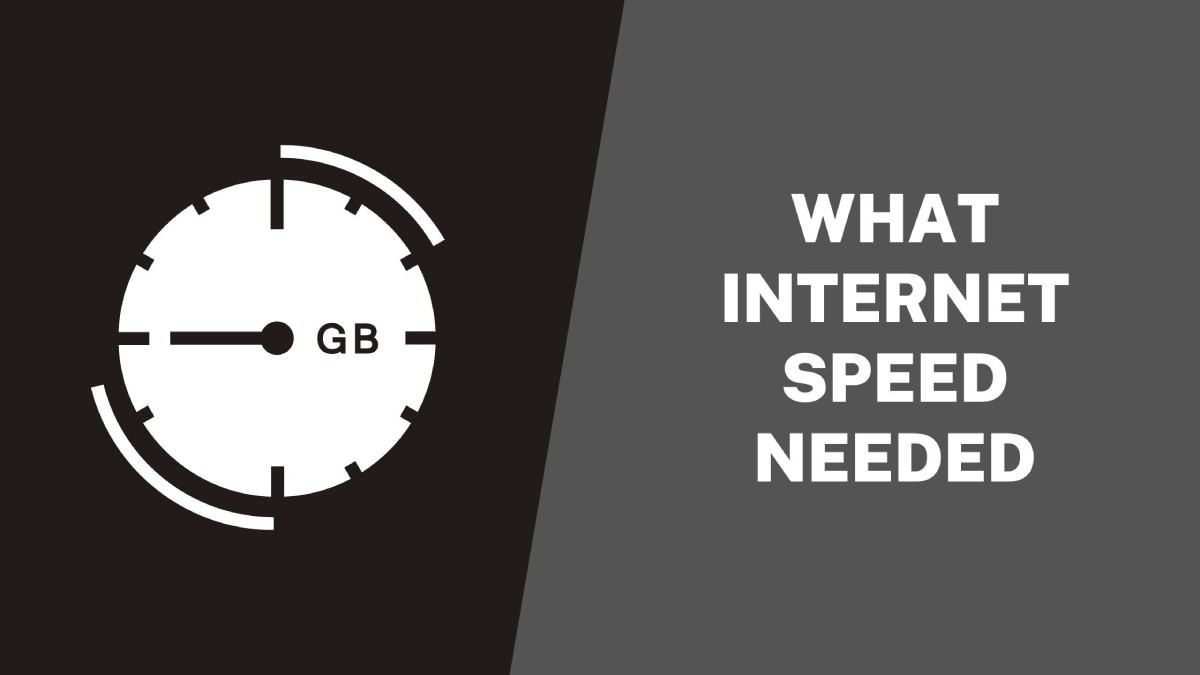The answer to what internet speed you need can evolve with your household’s needs from your internet service providers. Generally, most people don’t need download speeds above 200 Mbps. And acceptable upload speeds are around 10 Mbps. That said, the number of gadgets you have and what you use them for will impact what internet speed you need.
For instance, some ISPs already offer speeds as fast as 1 gig. However, most residences don’t need this much bandwidth yet. Some businesses, on the other hand, do. To determine the internet speed you need, consider what’s available in your area, how many devices you connect simultaneously, and what type of streaming you do.
As someone who has worked with all types of internet connections, from dial-up to fiber, I can assure you that paying for more speed isn’t always what you need.
Let’s look at what factors you should consider, such as:
- Your current speeds
- What various internet speeds can accommodate
- Service costs and guarantees
- Current and future household use
What Is Your Current Internet Speed?
If your internet speed isn’t cutting, performing a speed test can show you what you have. Your ISP may have an app or a website link where you can do this. Otherwise, you can run a speed test using Google’s link. Type in speed test in the search bar, and you’ll see the link to the test.
The test should show your upload and download speeds. Keep in mind this is a snapshot of your current connection and may not reflect the maximum speed your ISP’s plan offers.
Download and upload speeds can fluctuate and depend on the following:
- How many devices you’ve connected to at one time?
- Local network strain or activity.
- The location of the speed test server.
- How much content or data each of your connected devices is transmitting?
- The condition of your ISP’s infrastructure.
But you probably need to upgrade if you’re noticing that your connections are frequently dropping, buffering, or lagging. Take inventory of how many smart devices you connect each day and when. Someone who uses smart exercise equipment, runs a home office and streams in high definition will need more capacity than someone who simply checks email.
Know What Various Speeds Can Handle
Once you know how many devices you connect at once and what you use them for, you can answer the question of what internet speed you need. Sometimes it helps to look at charts or ranges of what various internet speeds can handle.
A word of caution, though. Just because a streaming service says their app will work at a lower speed doesn’t mean that’s the speed you need. That speed only takes into account the use of the streaming service’s app, which usually has the lowest video quality. Here are some general internet speed guidelines.
- Up to 25 Mbps for one to two connected devices or activities like surfing the web, streaming standard video quality, and using social media sites.
- Between 50 and 100 Mbps for connecting three to five devices and activities like HD streaming and online gaming.
- Between 150 and 200 Mbps for more than five devices and activities, including live streaming and sharing large amounts of data.
The Federal Communications Commission or FCC also maintains an online resource, so you can look at internet speed guidelines as equipment and infrastructure demands change.
Evaluate Service Costs and ISP Guarantees
Even though every ISP out there is essentially providing the same service, not all ISPs are equal in costs and guarantees. Depending on local infrastructure, internet service providers may deliver different types of service. These service types can determine what internet speeds your home can receive. Some of the internet service types include:
- Fixed Wireless
- Fiber
- Cable broadband
- DSL
- Satellite
While fiber networks can usually deliver the fastest speeds, rural or remote areas may lack fiber lines. The digital divide or broadband gap may mean only fixed wireless and satellite internet service are available. While higher speeds usually come with increased costs, you may find variances between service types and providers in the same area.
For instance, a wireless carrier might deliver broadband speeds via fixed wireless internet service in an urban area. That carrier uses its existing 5G network to offer lower prices than a cable broadband provider in the exact location. The cable provider charges more because its infrastructure is more expensive to maintain, and it can guarantee more consistent service.
Compare Current and Future Household Use
A household rarely keeps using the same devices year after year. You may add more smart appliances, security cameras, and streaming-intensive gadgets as technology evolve—generally, the answer to what internet speed you need will change with your needs.
The global pandemic, for example, put more demand on internet networks as more people embraced remote work and schooling. That said, smart homes and IoT devices are also calling for the need for increased speeds and network capacities. For example, it is forecasted that in the next five years, as many as 335 million homes will have a smart speaker. That’s compared to about 130 million today.
By estimating the devices you’ll use soon, you can prepare your internet connection by upgrading its speed. And even if you don’t get it right, the good news is that most ISPs will let you change plans on a whim. In addition, most are willing to help you determine what internet speed will work best for your needs.
Final Thoughts
Determining what internet speed you need may seem like an overwhelming task. You may not know where to start, especially if you’re not a techie. However, you don’t need a technical background to find a workable solution. Do speed tests, look at speed capacities, evaluate service providers’ offerings and costs, and compare current and future use.
If in doubt, you can always contact a few internet service providers in your area. Tell them how many devices you use and what for. They should be able to make a recommendation from there.







